Travertine deposits of hot springs near Monte AmiataIn the Larderello and Monte Amiata geothermal fields (southern Tuscany) are the oldest hot springs exploited by man in the world. Located in an area of regional lateral extension after the formation of the Apennines in the Miocene, their development was favoured by fracturing, magmatism and high heat flow. Hydrothermal phenomena still occur in both geothermal fields. Bagni San Filippo are located near the Siena-Radicofani graben, at the edge of the geothermal field of quaternary volcano Monte Amiata. Their water contains high concentrations of carbon dioxide and calcium, leading to rapid and abundant deposition of travertine (thermogene type).
|
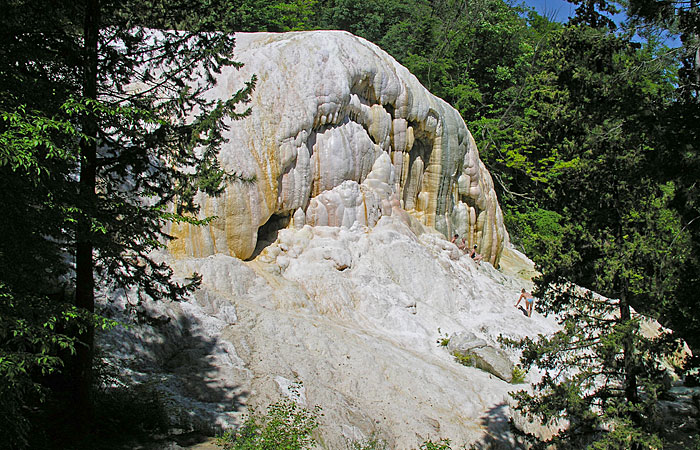 The water is used in various spa activities and then discharged into a small creek, Fosso Bianco, where several white travertine falls exists. Balena Bianca (White Whale, here seen from the North) is the most scenic one. | 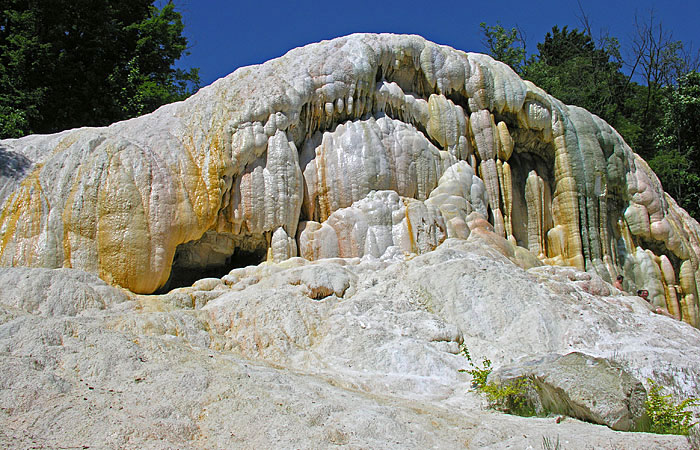 Balena Bianca (20 to 30m high) from the East. its complex of stalactites, stalagmites and ponds resembles, at a small scale, the terraces of Pamukkale (Turkey) or at Mammoth Hot Springs, Yellowstone (USA). | 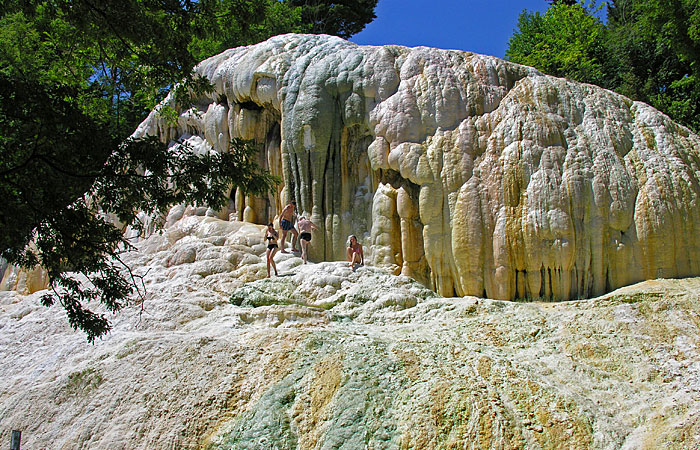 Cyanobacteria (green mats), yellowish sulphur and other minerals add colours to the otherwise white calcium carbonate deposits of the travertine complex. | 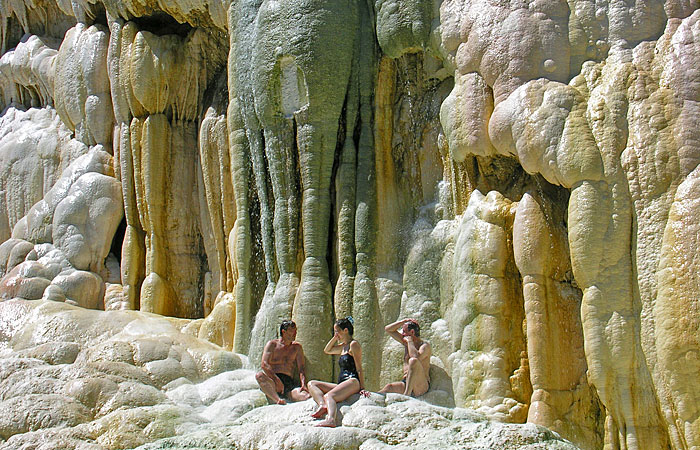 Travertine formation continues to this day: Columnar shapes form when stalactites grow downward until they join stalagmites, growing upwards. |
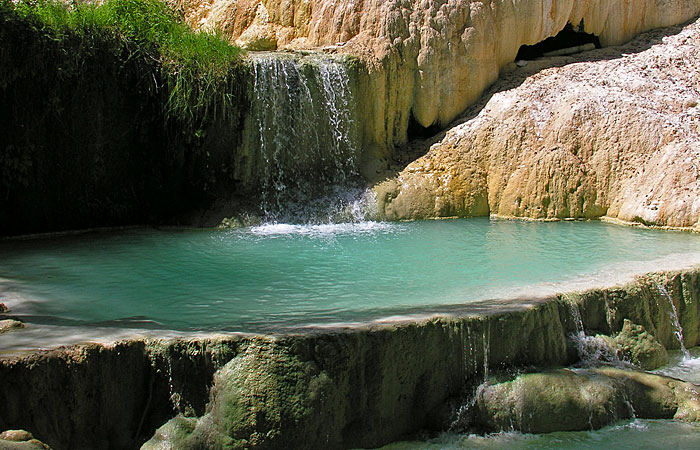 The water contains some sulphide and is very low in oxygen. Sulphide concentrations rapidly decrease downstream whereas oxygen increases. | 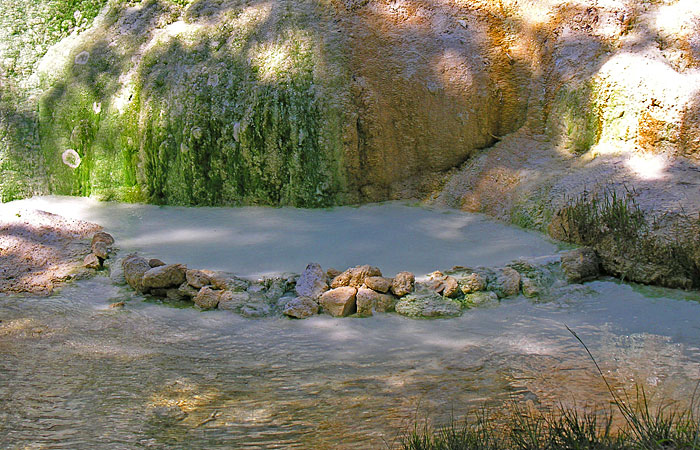 Travertine deposition creates terraces, waterfalls, and basins, excellent locations to study interaction of microbes and carbonate precipitation. | 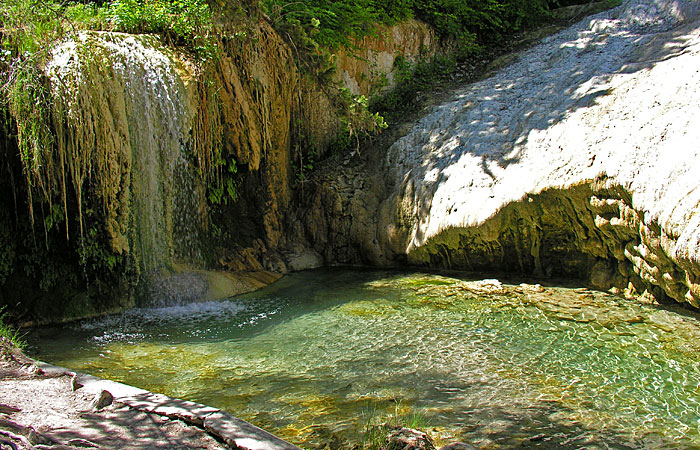 Water temperatures are between 35 and 52 °C, and the pH is in the small range of 6.60 to 7.50, increasing downstream due to degassing of carbon dioxide. | 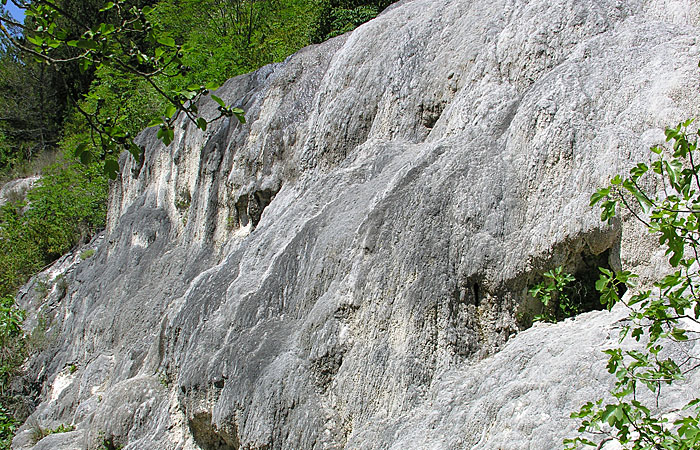 The water emerges at 525 metres above sea level where precipitation starts and then continues downwards. These dry deposits are affected by weathering. The plants are Ficus carica. |
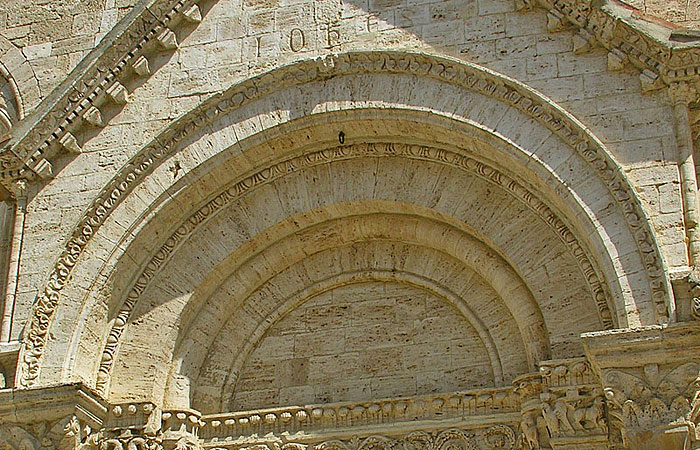 Travertine was used in the past as building stone. So-called "Collegiata" church in San Quirico, 12th century. Note "IOHES" (from Giovanni Pisano, presumed author) on the tympanum of the southern door.
| 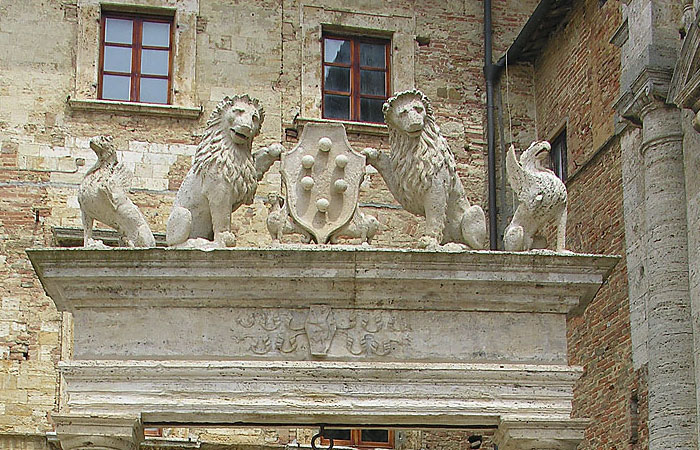 "Pozzo de Grifi e de Leoni" (Well of the Gryphons - symbol of etruscan origin of Montepulciano - and Lions - symbol of Florence) in Montepulciano, 16th century.
|  Saint Antimo's Benedectine Abbey near Montalcino, 8th till 12th century. Grotesque sculptures were used, on medieval buildings, to scare off evil spirits or simply as decoration. | 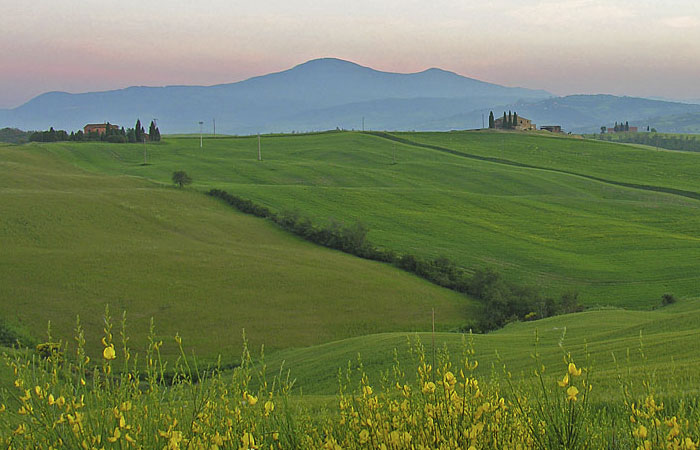 Monte Amiata, here seen from Pienza, is a 1738m high stratovolcano with trachydacitic lava flows and domes. Magmatism occurred from 300'000 to 200'000 years ago.
|
| Text: Valeria Perin; photos Valentina Pinto, April 2006 |